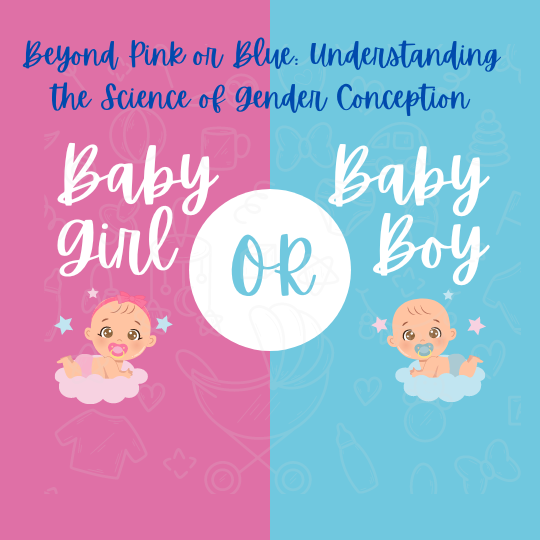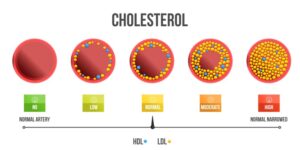Beyond Pink or Blue: Understanding the Science of Gender Conception

Introduction Beyond Pink or Blue: Understanding the Science of Gender Conception
The age-old fascination with determining a baby’s gender before conception has intertwined science, culture, and myth. While the pink or blue debate is often shrouded in anticipation and societal expectations, the underlying science is a complex interplay of chromosomes, environment, and, to an extent, sheer luck. This guide seeks to demystify the science of gender conception, debunk prevalent myths, and provide a comprehensive plan for couples exploring this journey.
Also Read:- Gender Hopes: Navigating the Path to Conceiving a Baby Boy
The Science Behind Gender Conception
Every human cell contains 46 chromosomes, which come in 23 pairs. One of these pairs, the sex chromosomes, determines gender. Women carry two X chromosomes (XX), while men carry one X and one Y chromosome (XY). The mother always contributes an X chromosome to the baby, while the father can contribute either an X or a Y. If the father contributes an X chromosome, the baby will be female (XX), and if he contributes a Y chromosome, the baby will be male (XY).
The sperm carrying the Y chromosome are said to be smaller, faster, but more fragile than their X chromosome counterparts. Environmental conditions in the female reproductive tract might favor one type over the other, influencing the outcome of which sperm fertilizes the egg.
Myths Surrounding Gender Conception
- Dietary Influence: Some believe that consuming certain foods can influence the baby’s gender. For example, a potassium-rich diet for a boy and a calcium-rich diet for a girl.
- Moon Phases: Some cultures believe that conceiving during specific moon phases can determine gender.
- Sexual Positions: Deep penetration is sometimes recommended for those hoping for a boy, while shallower penetration is suggested for a girl.
- Chinese Lunar Calendar: An ancient chart that predicts a baby’s gender based on the mother’s lunar age at conception and the month of conception.
- Body pH Levels: It’s thought that an alkaline environment favors boys, while an acidic environment favors girls.
A Plan for Understanding Gender Conception
- Education is Key: Begin by understanding the fundamental science of chromosomes and gender determination.
- Track Your Cycle: Use ovulation kits to understand your fertility window. Remember, the timing of intercourse in relation to ovulation is a popular theory, though not foolproof.
- Dietary Choices: While the evidence is anecdotal, some couples opt to adjust their diet based on the gender they hope to conceive.
- Consultation: Meet with a genetic counselor or fertility specialist to understand the science and any genetic factors that might influence gender.
- Modern Medical Techniques: Procedures like sperm sorting or IVF with Preimplantation Genetic Diagnosis (PGD) can determine gender with a high degree of accuracy. However, they are expensive, come with ethical considerations, and are typically used by couples with genetic concerns.
- Stay Open-Minded: It’s essential to approach this journey with an open heart and mind. Nature often has its plans, and every child, regardless of gender, is a unique gift.
Conclusion
The quest for gender conception, beyond the realms of pink or blue, is a deeply personal journey. While science offers some insight, and myths offer hope, the unpredictable beauty of conception remains a miracle. As couples navigate this path, it’s vital to prioritize the health and well-being of both mother and child, cherishing life in all its forms.









